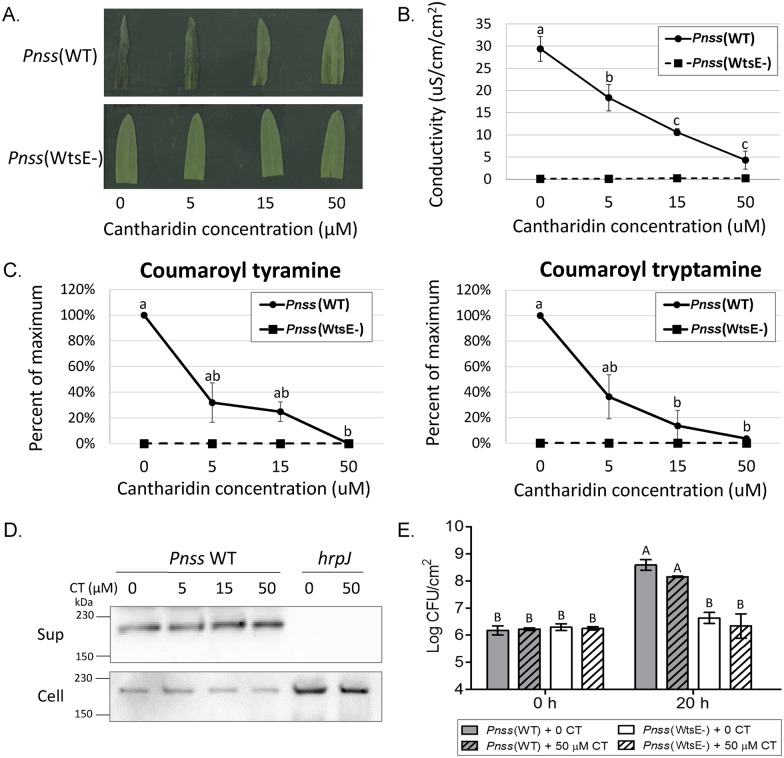Fig 2. Virulence activities of WtsE in maize seedling leaves are suppressed in a dose dependent manner by cantharidin independent of an effect on WtsE secretion or short-term Pnss growth.
Visual cell death symptoms (A) and electrolyte leakage (B) induced by wild-type, but not the wtsE mutant, Pnss are suppressed by cantharidin. Six-day-old maize seedlings were vacuum infiltrated with 109 CFU/mL of wild-type Pantoea stewartii subsp. stewartii (Pnss WT) or a wtsE mutant strain (Pnss WtsE-) supplemented with 0, 5, 15, or 50 μM cantharidin. Similarly treated samples were subjected to electrolyte leakage analysis (B) or metabolite measurements (C). Values shown in (B) are mean ± SD from three biological replicates and were analyzed by one-way ANOVA followed by Tukey test. Different letters indicate significant differences at P<0.05. (C) The ability of wild-type, but not wtsE mutant, Pnss to induce accumulation of conjugated derivatives of phenolic amino acids is suppressed by cantharidin. Quantities of coumaroyl-tyramine and coumaroyl-tryptamine were measured by LC-MS/MS, normalized to the internal control formononetin and quantified relative to standard curve generated from pure coumaroyl-tyramine or coumaroyl-tryptamine. Values shown are mean ± SD of relative quantities of each compound with 100% representing the amount induced by Pnss WT in the absence of cantharidin. The data is compiled from three biological replicates and was analyzed by one-way ANOVA followed by Tukey test. Different letters indicate significant differences at P<0.05. (D) Cantharidin does not affect production or secretion of WtsE from Pnss. Wild-type Pnss and the type-III secretion system deficient mutant (hrpJ) bacteria were grown in hrp-inducing liquid medium supplemented with 0, 5, 15, or 50 μM cantharidin (CT). Cultures were separated into supernatant (Sup) and cell (Cell) fractions by centrifugation. The WtsE protein (~204 kDa) in each fraction was detected by immunoblotting using an anti-DspA/E antibody. Shown is a representative blot from three biological replicates. (E) Cantharidin treatment does not affect short-term Pnss growth in maize seedlings following high titer infiltration. Six-day-old maize seedlings were vacuum infiltrated with 109 CFU/mL of wild-type Pantoea stewartii subsp. stewartii (Pnss WT) or a wtsE mutant strain (Pnss WtsE-) supplemented with 0 or 50 μM cantharidin (CT). Bacterial growth was assessed immediately following infiltration (0 h), or at 20 hai. Shown are mean ± SD from 3 biological replicates and data were analyzed by one-way ANOVA followed by Tukey test. Different letters indicate significant difference at P<0.01.

